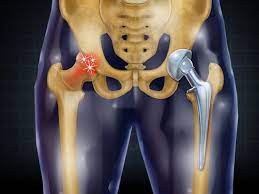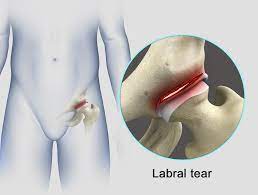
As with any intervention pre-operative planning and careful patient selection are imperative. A careful history should be taken followed by a thorough hip examination.
Common findings particularly in impingement include a reduced range of internal rotation and pain on internal rotation.
Any provisional diagnosis should be confirmed by imaging; however, many imaging modalities such as plain radiographs, CT and bone scanning have a low specificity for diagnosing intra-articular disorders.

MRI has proven to be extremely useful in this regard but still has limitations. Labral pathology is best diagnosed by MRI arthrogram.
Imaging is also essential for planning impingement surgery.
Anteroposterior (AP) pelvis and frog-leg lateral radiographs are commonly supplemented with 3D CT reconstructions in order to visualise the extent of any cam or pincer lesion.
Before surgery, the joints adjacent to the defective knee (hip and ankle) are carefully evaluated.
Blood-thinning medications such as warfarin (Coumadin) and anti-inflammatory medications such as aspirin may have to be adjusted or discontinued prior to surgery.
Routine blood tests of liver and kidney function and urine tests are evaluated for signs of anemia, infection, or abnormal metabolism.
Chest X-ray and EKG are performed to exclude significant heart and lung disease that may preclude surgery or anesthesia.
Hip replacement surgery can be performed traditionally or by using what is considered a minimally-invasive technique. The main difference between the two procedures is the size of the incision.

During standard hip replacement surgery patient are given general anesthesia to relax the muscles and put into a temporary deep sleep. This will prevent patient from feeling any pain during the surgery or have any awareness of the procedure. A spinal anesthetic may be given to help prevent pain as an alternative.
The doctor will then make a cut along the side of the hip and move the muscles connected to the top of the thighbone to expose the hip joint. Next, the ball portion of the joint is removed by cutting the thighbone with a saw. Then an artificial joint is attached to the thighbone using either cement or a special material that allows the remaining bone to attach to the new joint.
Patient will likely stay in the hospital for four to six days and may have to stay in bed with a wedge-shaped cushion between legs to keep the new hip joint in place. A drainage tube will likely be placed in patient’s bladder to help them go to the bathroom.

Physical therapy usually begins the day after surgery and within days patient can walk with a walker, crutches, or a cane. Patient will continue physical therapy for weeks to months following the surgery.
From six to 12 months after hip replacement surgery, pivoting or twisting on the involved leg should be avoided. Patient should also not cross the involved leg past the midline of the body nor turn the involved leg inward and should not bend at the hip past 90 degrees. This includes both bending forward at the waist and squatting.

Consultant orthopaedic surgeon will provide some techniques and adaptive equipment that will help patient to follow any of the above guidelines and precautions while performing daily activities.
There are a few simple measures that you can take to make life easier when you return home after hip replacement surgery, including:
Patient should consult with the doctor before returning to such activities as driving, sexual activity, and exercise.
HIP replacement surgery has revolutionized the field of orthopedics, offering a lifeline to individuals suffering from debilitating hip conditions. By providing pain relief, restoring mobility, and enhancing the overall quality of life, this procedure empowers patients to embrace a life free from the constraints of hip pain and stiffness.
Best Health Information visit here :- https://www.docopd.com/en-in/lab